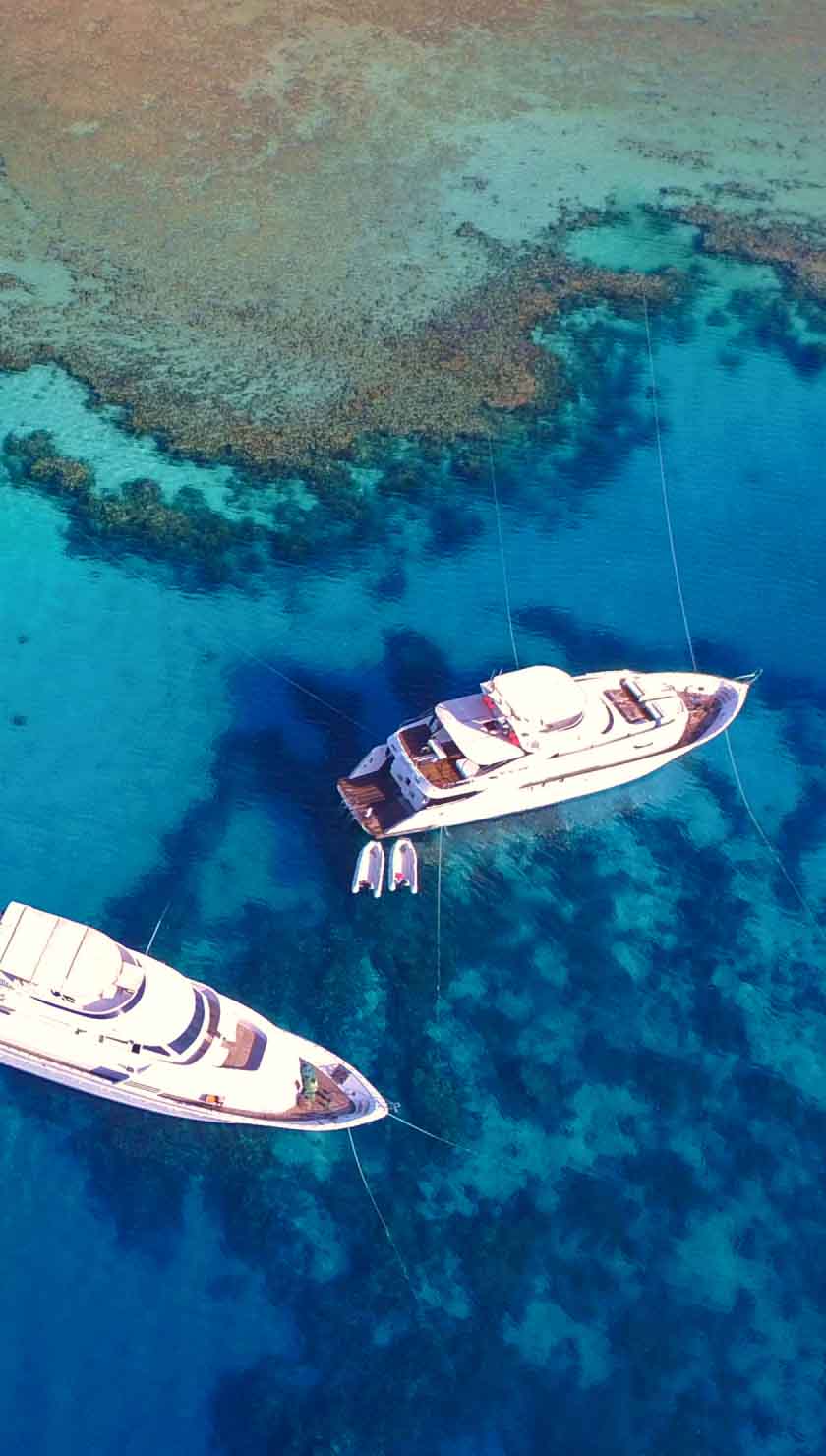Liveaboard Dive Trips in the Cayman Islands
By diving on a Cayman Islands liveaboard, you will experience the best of what the three islands have to offer beneath the waves in luxury, comfort and safety. Liveaboard itineraries offered are aboard a spacious 33m luxury motor vehicle yacht that will be your home for next 8 days as you explore some of the best dive sites in the Caribbean Sea.
Diving tours offer unlimited diving, but staying within your no-deco limits you can expect to log an average of 25 spectacular dives during the duration of your dive trip. In addition to diving during the day, night dives are also included. There are no minimum logged dive requirements but divers should have good buoyancy to navigate the swim-throughs and walls without impacting any of the fragile marine life. The Cayman Islands cater for divers with all levels of experience, whether you are new to the world of scuba or a diving veteran.
Liveaboard trips for the Caymans depart from the country's capital George Town, located on the main island of Grand Cayman. Weather permitting, you will be able to visit all three islands and dive sites such as the Russian Destroyer (Keith Tibbets), Stingray City, North Wall and Bloody Bay Wall among others.
The Cayman Islands offer superb liveaboard diving year round. All diving needs are catered for on the dive yacht and diving amenities include a large swim platform with personal gear lockers, air/nitrox fill stations, rinse tanks, camera table with low-pressure air hoses and 2 warm freshwater showers. Weight belts and tanks are included and additional gear can be hired for a fee.
When To Go
The Cayman Islands boast year-round diving but the months of May and June offer the best chance for good diving conditions. The average water temperature for this period is a balmy 82F - 86F.
Dive Sites & Areas of Cayman Islands
USS KITTIWAKE, Grand Cayman - Immersed in waters so clear you can see it from the surface, the wreck of the USS Kittiwake, a former submarine rescue ship decommissioned in 1994, is a stunning artificial reef bursting in marine life - which has been known to include the occasional whale shark.
TRINITY CAVES, Grand Cayman - A series of three coral-draped swim-throughs weaved throughout a main reef and haloed in ambient light. Marine life here is abundant, whether it be the dense schools of glittering silversides, the colourful parrotfish or the graceful eagle rays.
BLOODY BAY WALL, Little Cayman - This protected marine park is one of the most scenic wall dives the ocean world has to offer. Draped in marine life, the wall's iconic vase and tube sponges form colourful and dramatic scenery. Seahorses, sharks, groupers, eels, jacks and turtles are just some of the marine life to be found here.
BIG TUNNELS, Grand Cayman - A firm favourite for local divers and liveaboard guests on the west side of the island. The main attraction is a large tunnel-like archway adorned in colourful corals and sponges that frames the ocean deep. Keep an eye out for tarpon which can often be seen in the deeper areas.
STINGRAY CITY, Grand Cayman - On a beautiful shallow sandbar, friendly and curious Southern Atlantic Stingrays interact with divers for an unforgettable experience.
NORTH WALL, Grand Cayman - Offering some of the best wall diving sites in the world, the North Wall is famous for its sheer vertical drops and beautiful coral structures. A diverse array of reef fish, green turtles, nurse sharks and eagle rays are abound here. Be sure to occasionally glance towards the deep, as you might catch a glimpse of the larger pelagic species and maybe even a Hammerhead shark.
Tips For Travellers
There are no minimum logged dives requirements for liveaboard diving in the Cayman Islands, but divers must have good buoyancy to avoid impacting fragile marine life. As always, ensure you have adequate insurance for both the travel and scuba diving portions of your trip. If you do not have your own dive equipment, it is possible to rent it from the liveaboard at a fee of 175 USD - 260 USD per person, dependant on the itinerary. Be sure to mention in your booking if you require hired equipment.
The official currency of the Cayman Islands is the Cayman Islands Dollar, although US Dollars are widely accepted almost anywhere on the island. The official language of the island group is English, spoken in a variety of accents. English is also the language used by the liveaboard staff, crew and customer care team.
Electricity voltage in the Caymans runs at 110-120 Volts (Same as U.S./Canada), socket types are North American Non-Grounded, North American Grounded. Please note that these may not be identical to U.S./Canadian sockets, and may require an adapter.
How To Get There & Ports Of Departure
George Town is the main airport city of the Cayman Islands and also the point of departure for liveaboards. There are daily international flights into the Owen Roberts International Airport which is served by several airlines. Taxis are available for transport to and from the airport.
Considerations
A port fee of 45 USD will be charged per passenger and collected at the end of each week. Nitrox tank fills are available at a charge of 100-150 per person per trip dependant on the itinerary.
As always when travelling, make sure your passport is valid for at least 6 months beyond the date you intend to enter a country. Upon arrival, you will need to present your passport to immigration in order to gain entry into the Cayman Islands. Make sure to check the entry requirements prior to travel as they may differ according to country. See the Cayman Island Immigration website immigration.gov.ky for further details.
We recommend leaving at least 8 weeks to receive any vaccinations necessary for your travel itinerary. Diving holidays can be exerting, so it's always a good idea to book a health check-up too.
Diving the Cayman Islands is a perfect way to see these Caribbean Islands. Enjoy a blend of beautiful tranquil reefs, clear warm water and dramatic wall dives. See eagle rays, turtles and hundreds of stingrays on the reefs in the Caymans. Visit the famous USS Kittiwake & Stingray City.











